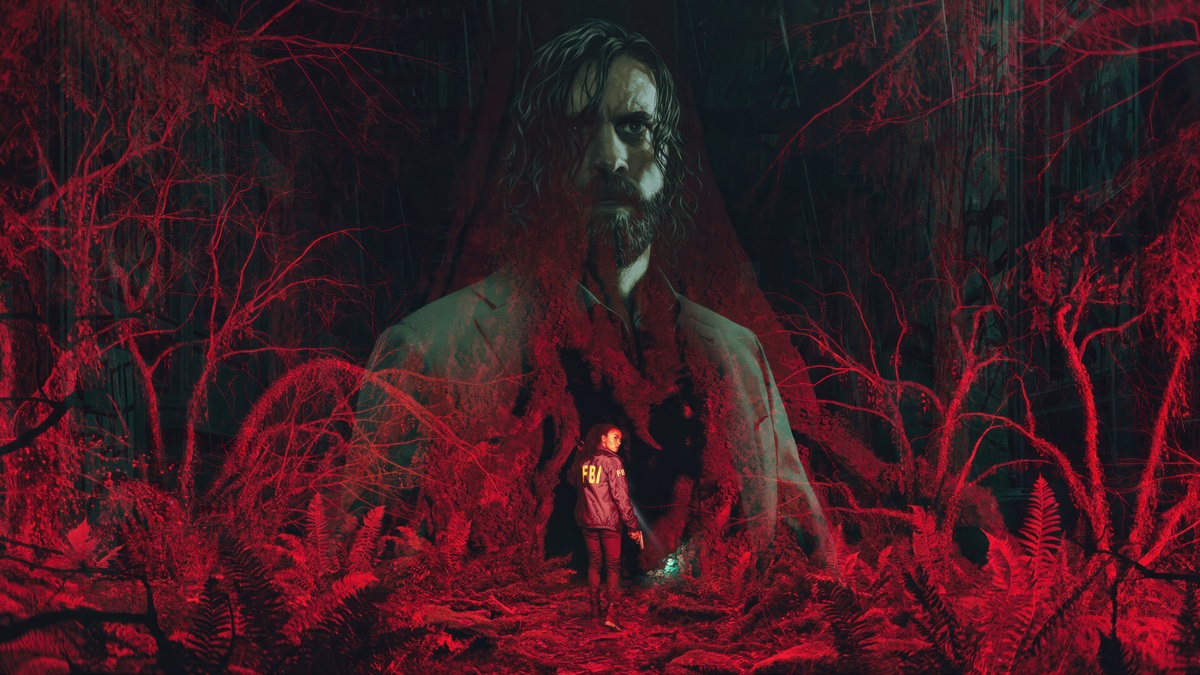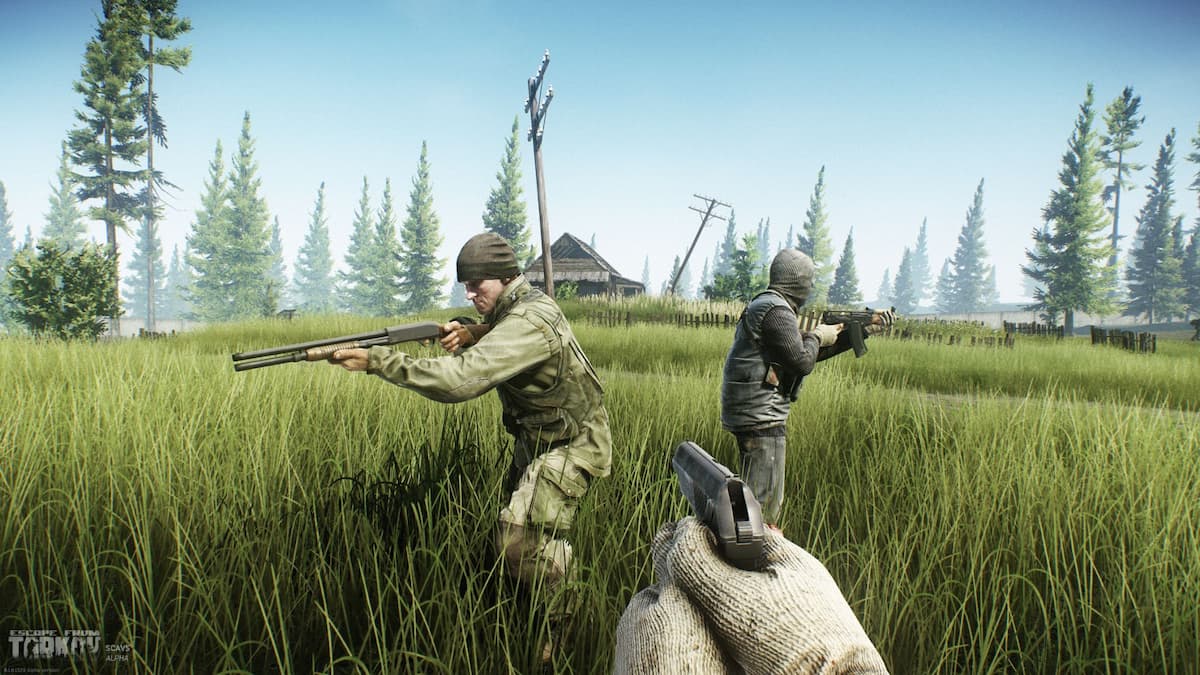Alan Wake II starts with the kind of phantasmagoric imagery Remedy fans recognize all too well at this point.
A forest in a storm. A man washed up on the shore, bemused and naked, shivering in the cold as the wind buffets against his bare skin, the illumination a juxtaposition of treacherous moonlight and unnerving shadows that never stay in a single spot for too long. Cultists suddenly appear up ahead, forcefully dragging him away. A series of intercutting shots, screams lost in the night. The game introduces you to Saga and Casey, two FBI agents who investigate the scene of the crime. All around, the people of Bright Falls are acting strange. An impossible incident shakes you to the very core of your being. Cut to black. Chapter titles. A song starts playing, perfectly complementing the surreal atmosphere. And so begins the journey.
I thought Quantum Break was just an excuse for Remedy to weasel its way out of developing a compelling game that actually played well, using cinema as a straw man to avoid scrutiny. I also didn’t care much for Control, which, admittedly fixed the gameplay problem, but completely let us down in the narrative department, weaving together a series of makeshift twists hidden behind a mask of surrealistic convolution. Indeed, it almost sounds like Remedy has lacked a certain kind of balance in its creative efforts over the past decade, never quite managing to hit the right notes in succession. But I’m delighted to inform those Sam Lake enthusiasts, those Alan Wake and Max Payne fanatics, that all of this changes with Alan Wake II, a sequel that finally marks the perfection of Remedy’s enjoyable yet at times frustrating formula. It had been a long time coming.
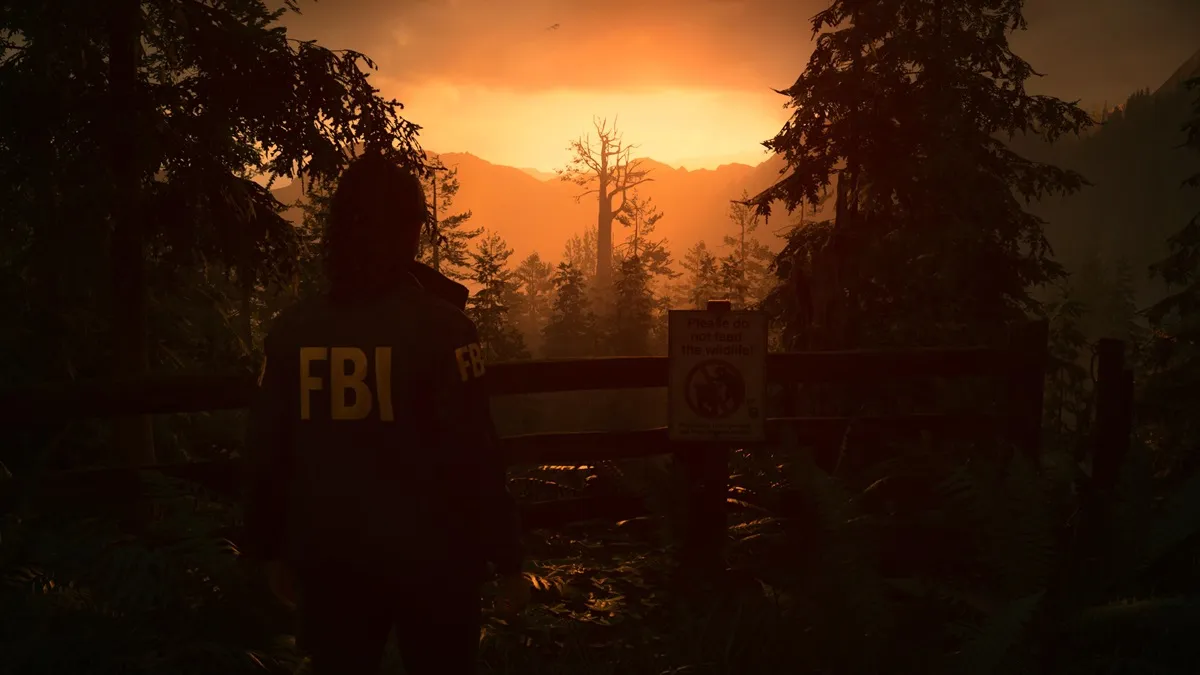
The last time we saw the titular Alan Wake, the crime novelist defeated his villainous alter ego. Now, after 13 years, Wake is going to attempt to escape the Dark Place by writing a completely new narrative, using the help of FBI Agent Saga Anderson and her partner Alex Casey to find a way out of the supernatural alternate reality and maybe even defeat the Dark Presence in the process. But how successful is this new outing, especially compared to Remedy’s last couple of releases?
There is usually this great debate about whether games can be artistic, and people take that, by an extended definition, to mean that they’re able to execute a compelling story within the confines of their gameplay. Some believe that games should be just what their names imply; a fun experience fueled by interactive mechanics. The subtler the touch of the game design, the more intricate the blueprint of variables. On the other side of the spectrum, people have been campaigning for video games to embody more than just a playtime tool. They want the experience to mean something, and that usually manifests itself by allusions to artistic touch.
For most games these days, especially triple-A productions, the creative process is a dance between these two extremes, a pendulum of expectations that pushes studios one way and then another in the long development process. Most of them fail to capture this balance and many opt to ignore the equation altogether by embracing the more classic philosophy of just making a game that’s fun to play. The shallow, generic, and laughable excuse of a narrative that accompanies most titles by default is one reason to avoid that fate.
The folk at Remedy, however, have years of experience experimenting with this elusive balance, which is why they have been able to perfect it in Alan Wake II. There is never too much exposition in the cutscenes. The characters don’t try too hard to prove that they aren’t cardboard cutouts of their extra-medium counterparts. The direction and camera work are actually well-thought-out and professional. The surrealistic elements don’t take over the experience as they did with Control. Rather, they guide it around a sense of groundedness native to rural Bright Falls (where the game takes place) and its surrounding area, Cauldron Lake. Even the alternate-reality New York, more so a manifestation of the Dark Place than reality, follows this rule to a large extent.
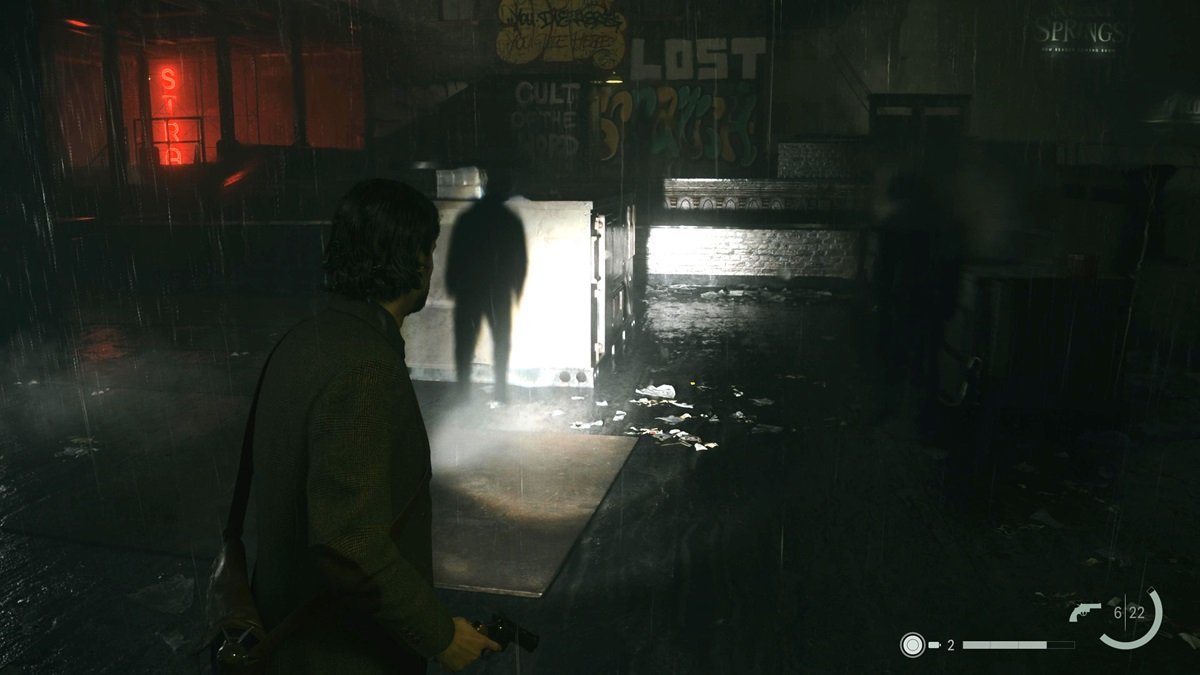
And when the gameplay takes over, the camera transitions into a treacherous companion, somehow always conveying to the player that maybe they should be looking over their shoulders, rather than what lies in front of them. What is it that moves in the corner of the screen? Was that the wind, or more of the creatures of nightmare that take form and bar Alan’s path?
Horror is a tired and trope-filled genre. In the hands of amateurs, it is little more than “horror for the sake of horror,” never quite managing to haunt your memories besides a few jumpscares and horrifying character sketches. For writers who know what they’re doing, though, horror is always in the supernatural and the unknown. You fear that which you cannot comprehend, and if there’s one thing we can say about Alan Wake and its mystifying universe, it’s that we have yet to comprehend the nature of all the supernatural things that occur to its lead character.
On higher difficulties, the combat is very challenging, the mobs unpredictable and slippery. You have to conserve your resources, lest you find yourself facing an enemy with no flashlight batteries or ammo. The brilliant thing about Alan Wake — and something we definitely missed from the original — is the utilization of illumination as a major gameplay and plot tool. The mere fact that your weapons and ammo are useless unless you can penetrate the darkness of the game’s mob, acting like an armor of sorts, not only adds a layer of challenge to the fights but also reinforces the dreadful nature of what you’re facing; that these creatures can’t be brought down by conventional arms.
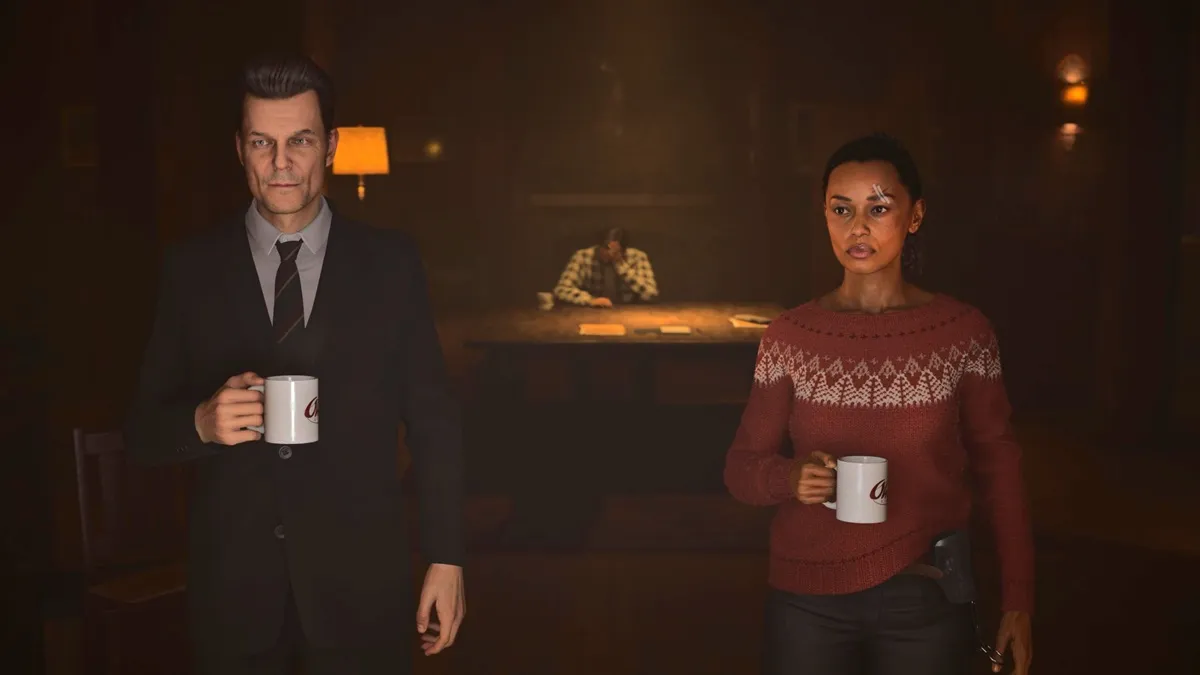
The puzzles and the detective work are also a welcome retreat from the scary atmosphere, giving you time to reflect on the story and its numerous enigmas while slowly putting together different pieces of the puzzle. The transition between Saga Anderson and Wake himself — the two playable characters in the sequel — encompasses two very different playstyles. The writer in me exclaimed in glee whenever Alan rewrote his narrative to move forward or whenever one of those bone-chilling manuscript pages predicted what was to come in the immediate future.
That’s not to say the experience is flawless. Fortunately, I encountered no discernible glitches or performance issues in my playthrough, but one nasty bug in the menus — when visiting the Writer’s Room, to be precise — stopped me from going further in the story. I tried reloading from different checkpoints, or approaching that junction in different ways, yet there was no way to surmount the problem.
But here’s the thing, folks. Alan Wake II gets so many things right that I hesitate to call it out on a single bug, albeit a game-crushing one. The narrative is immensely gripping, the dialogue is crisp, and the gameplay confidently matches stride with Remedy’s atmospheric storytelling. And when all is said and done, it’s these eerie environments, a perfect execution of mise-en-scène, that end up hooking you in.
This review is based on the PlayStation 5 version of the game, and all screenshots captured by We Got This Covered are from time spent playing the game in its Quality graphics mode. A review copy was provided by Epic Games.

